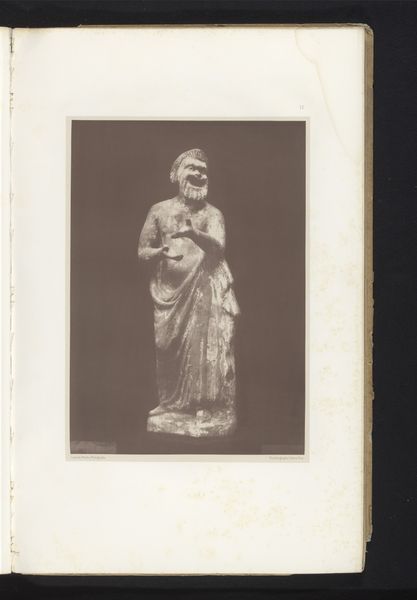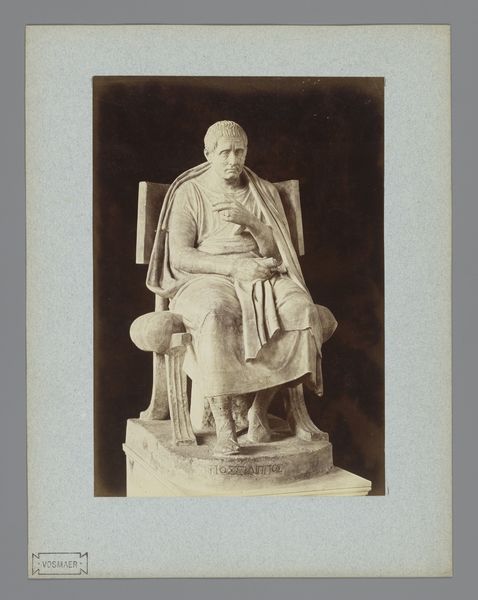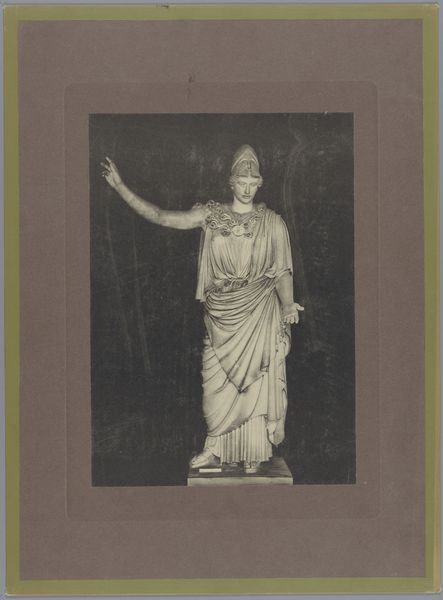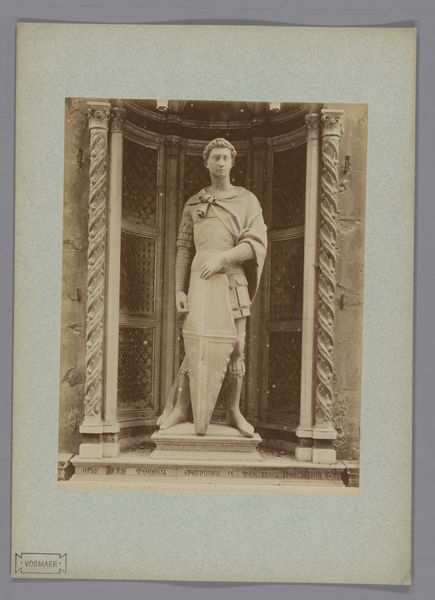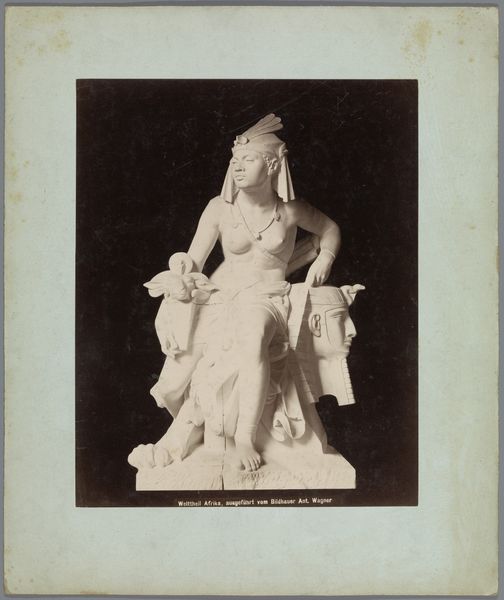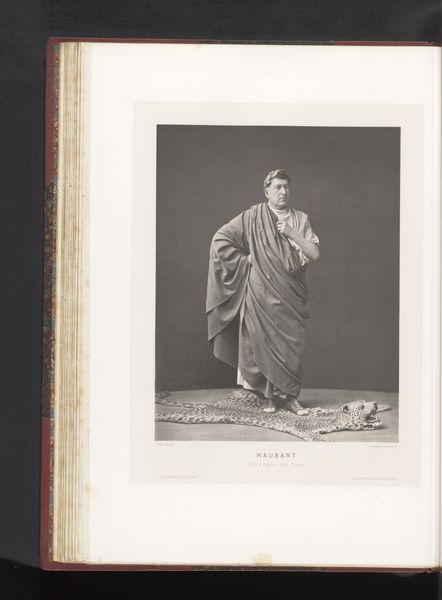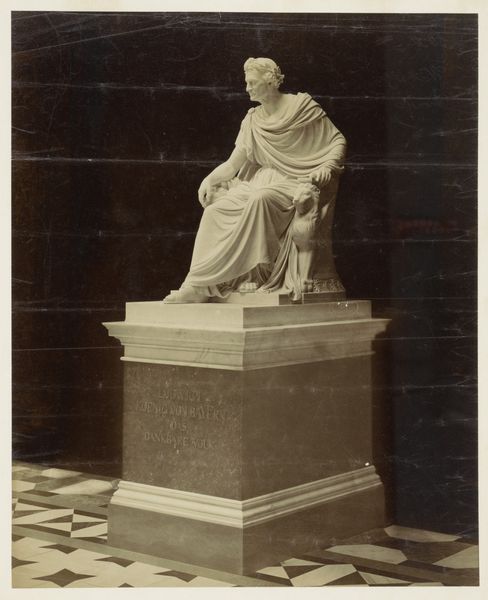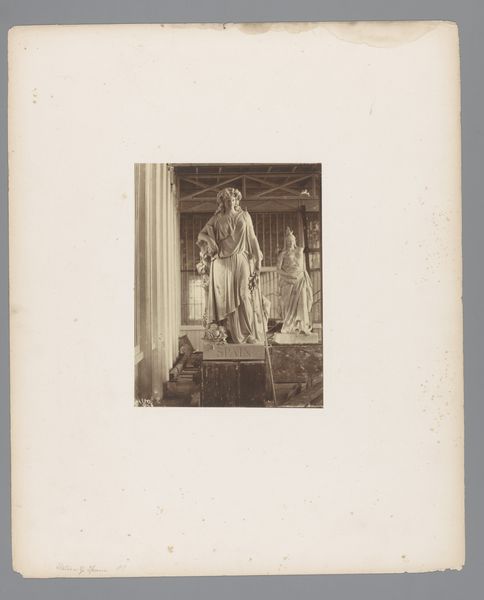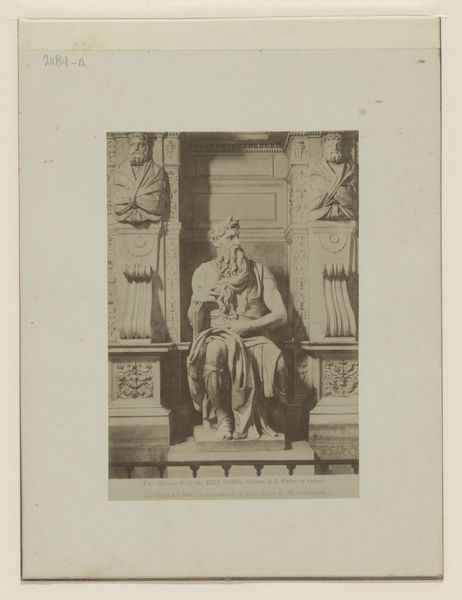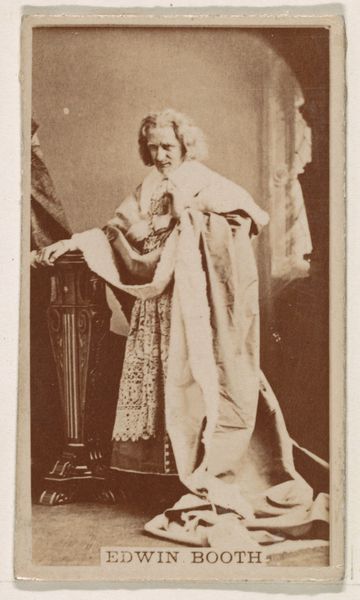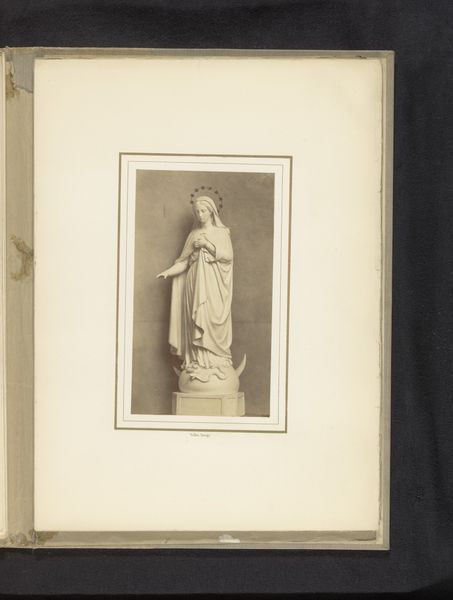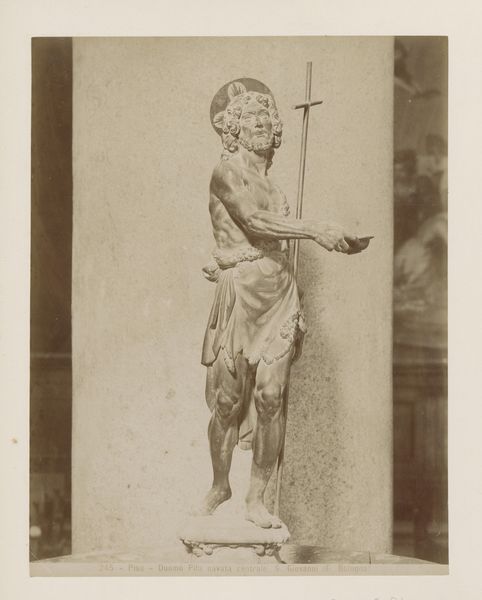
Beeld of afgietsel van een beeld van Maussollos te Londen 1850 - 1900
0:00
0:00
photography, sculpture, gelatin-silver-print
#
portrait
#
statue
#
greek-and-roman-art
#
photography
#
sculpture
#
gelatin-silver-print
#
cityscape
#
monochrome
Dimensions: height 369 mm, width 302 mm
Copyright: Rijks Museum: Open Domain
Curator: Here we have a gelatin-silver print from between 1850 and 1900, by Adolphe Giraudon. It's titled "Beeld of afgietsel van een beeld van Maussollos te Londen," which translates to "Image or cast of an image of Mausolus in London". Currently residing in the Rijksmuseum, it presents a photograph of what appears to be a statue or plaster cast. Editor: Well, the first thing that strikes me is its ghostly stillness. It’s a monochromatic image with subtle gradations. The composition, placing the statue against an arcade backdrop, creates a compelling dialogue between eras and materials. It’s not just about the statue, but about how it’s framed and presented. Curator: Exactly. The photograph captures more than just the sculpture of Mausolus; it captures the setting and light, which becomes integral to the artwork's mood and interpretation. The background whispers stories of its current London museum home. Editor: You’re right, I see this layering now, how one artifact comments on the other. I am wondering, who sees whom, the viewer from our time watching this portrait or, the sitter watching us from eternity? There is also the play between two art forms, a picture representing sculpture. I wonder, does that influence our feeling? Curator: Absolutely. This kind of photographic representation raises interesting questions about authenticity and reproduction. Is this an original sculpture? Is it a cast? What does it mean to encounter a historical figure, Mausolus, through layers of artistic interpretation—first sculpted, then photographed, and now presented to us? Editor: It adds another layer to his powerful story; this man after whom monuments were made is remembered as a shadow of the forms of light. Curator: True, there's a quiet melancholic feel, a whisper of the past echoed in shades of gray. Editor: It certainly invites contemplation on how we remember and represent the giants of history. I think it offers a multi-layered look at legacy and how context shapes our perception of it. Curator: Ultimately, it asks us to think about time, memory, and the continuous journey of art across different eras and mediums.
Comments
No comments
Be the first to comment and join the conversation on the ultimate creative platform.
